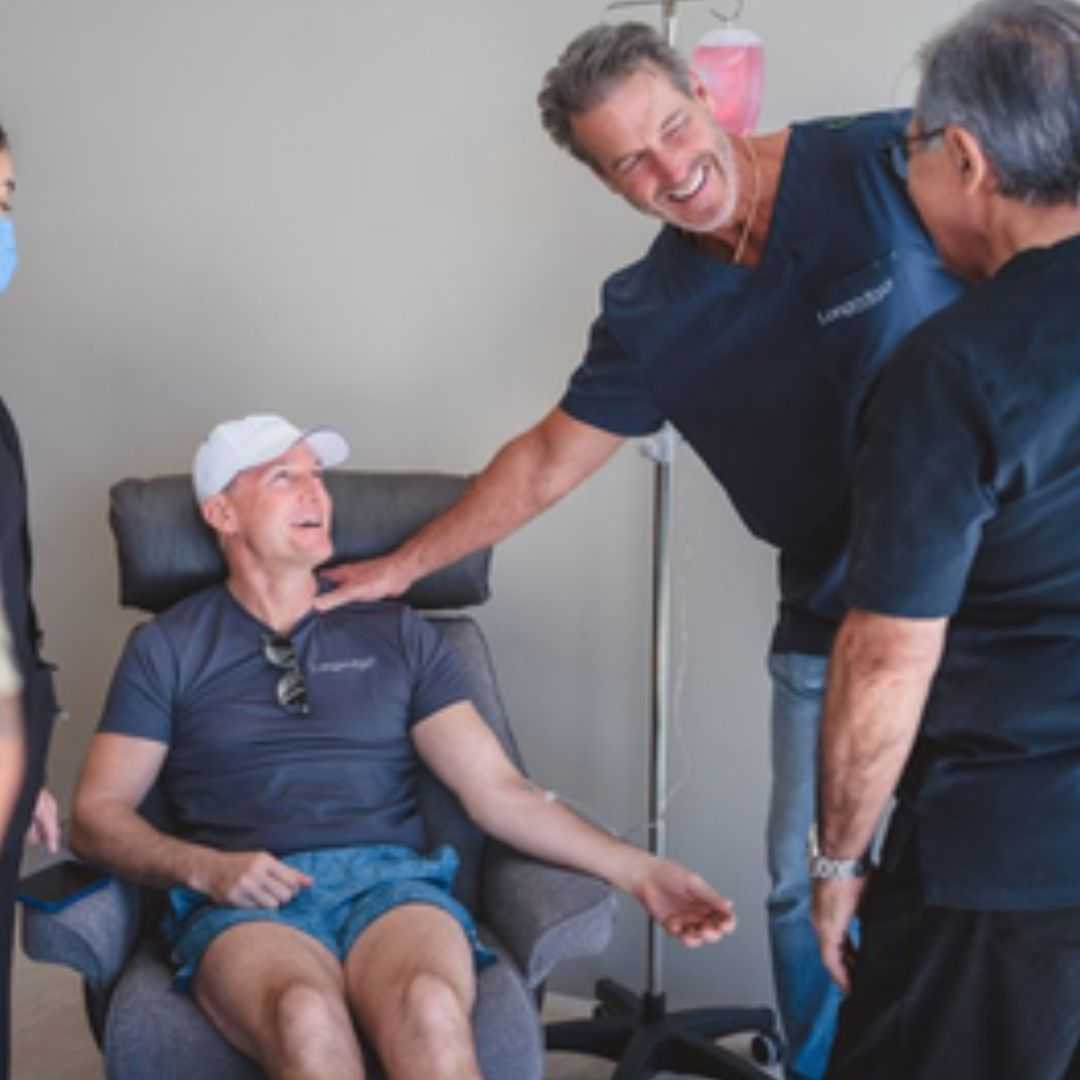
Unveil Your Perfect Smile: What is Gum Contouring and How Can It Transform Your Look?
Do you ever feel self-conscious about your smile because your gums seem to cover too much of your teeth, making them appear short or disproportionate? Many people experience what’s often called a "gummy smile" or have an uneven gum line, which can significantly impact their confidence. If you’ve searched for "how to fix a gummy smile" or "gum reshaping procedure," you're not alone. The good news is that there's a highly effective solution: gum contouring.
Gum contouring, medically known as a gingivectomy or gingivoplasty, is a cosmetic dental procedure designed to sculpt and reshape the gum tissue around your teeth. The goal is to create a more harmonious balance between your gums and teeth, revealing more of your natural tooth structure and enhancing your smile's overall aesthetics. It’s a precise, often minimally invasive treatment that can make a dramatic difference, helping you achieve the radiant smile you've always desired.
Whether your gum line is naturally high, uneven due to genetics, or affected by certain medications, gum contouring offers a pathway to a more symmetrical and confident grin. This guide will delve deep into everything you need to know about this transformative procedure, from identifying the signs that you might benefit from it to understanding the recovery process and exploring cost-effective options through medical tourism.
What are the symptoms of an uneven or excessive gum line?
Many individuals are unaware that their smile concerns stem from their gum line. If you've ever thought, "why do my gums cover my teeth?" or "my teeth look too short," you might be experiencing symptoms that gum contouring can address. Here are the key indicators:
- A "Gummy Smile" (Excessive Gingival Display): This is the most common symptom, where a significant amount of gum tissue is visible above your upper teeth when you smile, making your teeth appear shorter than they are. It’s often defined as showing 3-4 millimeters or more of gum tissue.
- Short-Looking Teeth: Your teeth may be a normal length, but they appear disproportionately small or stubby because they are partially covered by excess gum tissue.
- Uneven Gum Line: The gum tissue around your teeth might not be symmetrical. For example, one tooth might have more gum covering it than an adjacent tooth, leading to an unbalanced appearance.
- Difficulty with Oral Hygiene (less common but possible): In some cases of severe gum overgrowth, cleaning around the gum line can become more challenging, potentially leading to plaque buildup and inflammation.
- Self-Consciousness: The most significant symptom for many is the emotional impact – feeling reluctant to smile fully or covering your mouth when you laugh due to embarrassment about your gums.
What causes a gummy smile or uneven gums?
Understanding the root cause behind your gummy smile or uneven gum line can help clarify why gum contouring is the right solution. While many wonder "why do gums grow over teeth?", the reasons are varied:
- Genetics: Often, the primary cause is simply inherited. Your genes can determine the amount of gum tissue you have, the size and shape of your jaw, and how your teeth erupt. If your parents have a gummy smile, you might too.
- Altered Passive Eruption: This occurs when permanent teeth don't fully erupt, remaining partially covered by gum tissue and even bone. This makes the teeth appear shorter than their actual length.
- Gingival Hyperplasia (Gum Overgrowth): This is an overgrowth of gum tissue. It can be caused by:
- Certain Medications: Some drugs, like immunosuppressants (e.g., cyclosporine), calcium channel blockers (used for high blood pressure or heart conditions), and anti-seizure medications (e.g., phenytoin), can cause the gums to enlarge. If you're on a "medication causing gum overgrowth," discussing alternatives with your doctor might be an option, but gum contouring can address the existing issue.
- Inflammation or Infection: Poor oral hygiene leading to chronic inflammation (gingivitis) can sometimes contribute to gum swelling, making the gums appear larger.
- Systemic Diseases: Rarely, certain health conditions like leukemia or hormonal imbalances (e.g., during pregnancy) can lead to gum enlargement.
- Orthodontic Issues: An underlying bite problem or jaw misalignment can sometimes contribute to the appearance of a gummy smile.
- Hyperactive Upper Lip: In some cases, the upper lip muscle is overly active, causing the lip to rise too high when smiling and exposing more gum tissue. This particular cause might require different or combined treatments (e.g., Botox injections) in addition to gum contouring.
What types of gum contouring procedures are available?
Gum contouring has evolved, offering various techniques to achieve the desired aesthetic outcome. The choice of method often depends on the extent of tissue removal needed, the dentist's expertise, and patient preferences. Patients often ask about "laser gum contouring vs traditional" methods:
- Traditional Scalpel Gingivectomy:
- Method: This classic approach uses a surgical scalpel to carefully remove excess gum tissue and reshape the gum line.
- Benefits: Highly effective for removing larger amounts of tissue, often straightforward for experienced periodontists.
- Considerations: Involves traditional surgical incisions, which may result in more bleeding and a slightly longer initial healing period compared to laser methods. Local anesthesia is always used.
- Laser Gum Contouring:
- Method: A specialized dental laser is used to precisely trim and reshape the gum tissue.
- Benefits: The laser simultaneously cuts and cauterizes the tissue, leading to minimal bleeding, reduced swelling, lower risk of infection, and often faster, more comfortable healing. It allows for incredibly precise sculpting. Many find this a more appealing "gum reshaping technique" due to these advantages.
- Considerations: May not be suitable for very extensive tissue removal that also involves underlying bone. Requires specialized equipment and training.
- Electrosurgery or Radiofrequency Ablation:
- Method: Uses high-frequency electrical currents to remove and reshape gum tissue.
- Benefits: Provides excellent precision and cauterization, similar to lasers, reducing bleeding.
- Considerations: Less common than scalpel or laser methods, requires specific equipment, and generates heat that can affect surrounding tissues if not handled expertly.
In some cases, especially when the underlying bone structure contributes to the gummy smile, a procedure called crown lengthening may be necessary. This involves reshaping both gum tissue and a small amount of bone to expose more of the natural tooth. Your dentist will determine the most appropriate "gingivectomy options" for your specific needs.
Am I a good candidate for gum contouring?
If you're wondering "who needs gum contouring" or "is gum contouring for me," here's what typically makes someone an ideal candidate:
- Good Overall Oral Health: This is paramount. You should have healthy gums free from active periodontal disease (gingivitis or periodontitis), cavities, or infections. Any existing oral health issues must be addressed before gum contouring can be performed.
- A Gummy Smile or Uneven Gum Line: The primary reason for seeking this procedure is cosmetic — you are bothered by the appearance of too much gum tissue when you smile, or your gum line is visibly uneven.
- Healthy Teeth: Your teeth should ideally be healthy and free from major structural issues. Gum contouring primarily addresses the soft tissue.
- Realistic Expectations: While gum contouring can dramatically improve your smile's aesthetics, it's important to understand the potential outcome and limitations. A consultation with a qualified dental professional will help set these expectations.
- Not Pregnant: As with most elective dental procedures, it's generally advised to postpone gum contouring if you are pregnant.
- No Contraindications to Anesthesia: You should be medically fit to receive local anesthesia.
A comprehensive consultation with a periodontist or an experienced cosmetic dentist is essential. They will evaluate your oral health, assess the cause of your gummy smile, and determine if "eligibility for gingivectomy" is met, or if other treatments like orthodontics or crown lengthening might be more suitable or complementary.
What is the recovery time and what can I expect after gum contouring?
Understanding "gum contouring recovery" is crucial for a smooth and successful outcome. While the procedure itself is relatively quick, the healing process requires a little patience. Here's what you can generally expect:
- Immediate Aftermath (First 24-72 hours):
- Mild Discomfort: You may experience some soreness, tenderness, or throbbing in the treated area. This is usually mild and easily managed with over-the-counter pain relievers like ibuprofen or acetaminophen. Your dentist may prescribe stronger medication if needed.
- Swelling: Some minor swelling is normal. Applying a cold compress to the outside of your mouth can help reduce it.
- Bleeding: Slight oozing or light bleeding from the gums is normal immediately after the procedure, but it should subside quickly.
- Diet: Stick to soft, cool foods to avoid irritating the healing gums. Think yogurt, smoothies, mashed potatoes, and soups. Avoid anything spicy, crunchy, or very hot.
- Oral Hygiene: Your dentist will provide specific instructions. Generally, avoid brushing or flossing the treated area directly for a day or two. You may be advised to use an antimicrobial mouth rinse.
- First Week:
- Discomfort and swelling should largely subside.
- You can gradually reintroduce more solid foods as tolerated, still avoiding anything that could scratch or irritate the gums.
- Continue gentle oral hygiene.
- Full Healing (2-4 weeks):
- While the initial discomfort resolves quickly, complete gum tissue healing, where the gums fully reattach and remodel, can take several weeks.
- The final aesthetic results will become clearer as the gums heal completely.
- Follow-up appointments will be scheduled to monitor your healing progress.
Patients often ask "what to do after gingivectomy." Key advice includes avoiding strenuous activity, not smoking (which can severely impair healing), and meticulously following all post-operative instructions from your dental professional. The question "how long does gum reshaping take to heal?" largely depends on the individual and the extent of the procedure, but most feel back to normal within a few days, with complete tissue maturation taking a few weeks.
What are the risks and side effects of gum contouring?
While gum contouring is a safe and common procedure when performed by a qualified professional, like any medical treatment, it does carry some potential "gum reshaping side effects" and risks. It's important to be aware of these, though serious complications are rare:
- Temporary Swelling and Discomfort: As discussed in recovery, this is normal and expected, typically resolving within a few days.
- Minor Bleeding: Some light oozing after the procedure is common. Persistent or heavy bleeding is rare but should be reported to your dentist.
- Sensitivity: Teeth may feel temporarily more sensitive to hot or cold temperatures after gum contouring, as more of the tooth surface is exposed. This usually subsides as the gums heal.
- Infection: Though rare, there's a small risk of infection at the treatment site. Following post-operative care instructions, including any prescribed antibiotics or rinses, significantly minimizes this risk.
- Asymmetry or Unsatisfactory Aesthetic Result: While the goal is symmetry, there's a slight chance that the gum line might not be perfectly even, or the patient may not be entirely satisfied with the final appearance. This is why choosing an experienced and skilled dentist is crucial.
- Gum Recession: If too much gum tissue is removed, it can lead to gum recession, exposing the tooth roots. This is very rare with skilled practitioners.
- Reaction to Anesthesia: As with any procedure involving local anesthesia, there's a minimal risk of an allergic reaction or other side effects related to the anesthetic.
When considering "is gum contouring safe," rest assured that the procedure has a high success rate and low complication rate, especially when performed by a board-certified periodontist or an experienced cosmetic dentist. Your dentist will discuss these potential "risks of gingivectomy" during your consultation to ensure you are fully informed.
How much does gum contouring cost worldwide, and what factors influence the price?
The "gum contouring cost" can vary widely depending on several factors, making it a key consideration for many patients. This is especially true for those researching "gingivectomy price" and "affordable gum reshaping."
Factors Influencing Gum Contouring Cost:
- Extent of the Procedure: Are you having just a few teeth treated, or is it a full arch (all front teeth)? The more teeth involved, the higher the cost.
- Technique Used: Laser gum contouring may sometimes be slightly more expensive than traditional scalpel methods due to the specialized equipment involved, though this isn't always the case.
- Geographic Location: Costs are significantly higher in countries like the US, Canada, and Western Europe compared to regions popular for medical tourism.
- Dentist's Experience and Reputation: Highly experienced periodontists or cosmetic dentists in reputable clinics may charge more for their expertise.
- Clinic Facilities: State-of-the-art clinics with advanced technology may have higher overheads, impacting prices.
- Anesthesia: The cost of local anesthesia is usually included, but if sedation dentistry is used, it adds to the overall price.
- Additional Procedures: If crown lengthening (bone reshaping) or other dental work is needed, the cost will increase.
Worldwide Cost Comparison (Approximate Ranges):
Please note: These are general estimates and actual prices can vary based on the factors listed above, currency exchange rates, and individual clinic pricing. It is always recommended to get a personalized quote.
| Country | Estimated Cost (Per Tooth) | Estimated Cost (Full Arch / 6-8 Teeth) |
|---|---|---|
| USA / Canada | $150 - $400 | $800 - $3,000+ |
| UK / Western Europe | £100 - £300 / €120 - €350 | £700 - £2,500 / €800 - €2,800+ |
| Mexico / Costa Rica | $50 - $150 | $300 - $1,000 |
| Turkey | $40 - $120 | $250 - $800 |
| India / Thailand | $30 - $100 | $200 - $700 |
Why consider gum contouring abroad for a better smile?
For many patients seeking "dental tourism gum contouring," the decision to travel abroad for their procedure is driven by compelling advantages:
- Significant Cost Savings: This is often the primary motivator. As seen in the cost comparison, the price of gum contouring can be dramatically lower in popular medical tourism destinations compared to Western countries. These savings can make a desirable cosmetic procedure far more accessible.
- Access to High-Quality Care and Expertise: Many international clinics, particularly those catering to medical tourists, boast state-of-the-art facilities, advanced technology (like laser dentistry), and highly qualified dental professionals trained internationally. "Gum contouring abroad reviews" often highlight the professionalism and skill encountered.
- Reduced Waiting Times: In some countries, getting an appointment for elective cosmetic procedures can involve long waiting lists. Abroad, you can often schedule your procedure much sooner.
- Combine Treatment with a Vacation: Traveling for gum contouring allows you to turn your dental visit into an exciting travel experience. You can recover in a relaxing environment and explore a new culture, creating positive memories around your dental journey.
- Privacy: Some individuals prefer the discretion of receiving cosmetic treatments away from their home country.
For those researching "is it safe to get gum contouring overseas," the key is thorough research and choosing reputable providers. The quality of care in top medical tourism hubs can be on par with, or even exceed, that found in domestic settings, but diligent vetting is essential.
Which countries offer the best value for gum contouring procedures?
When searching for "best country for gum contouring" or "affordable dental work abroad," several destinations consistently emerge as top choices due to their combination of quality, affordability, and tourist appeal:
- Mexico: Especially popular for North American patients due to its proximity. Cities like Tijuana, Cancun, and Los Algodones offer numerous modern dental clinics with English-speaking staff and US-trained dentists. The cost savings are substantial.
- Costa Rica: Known for its beautiful scenery and high standard of dental care, particularly in the capital, San José. It's a fantastic option for combining dental work with an eco-tourism vacation.
- Turkey: Istanbul and Antalya are growing hubs for dental tourism, attracting patients from Europe and the Middle East. Clinics are often equipped with the latest technology, and package deals (including accommodation and transfers) are common.
- India: Offers some of the most competitive prices globally, along with highly skilled dentists and advanced facilities in major cities like Mumbai, Delhi, and Bangalore.
- Thailand: A long-established medical tourism destination, with Bangkok and Phuket leading the way for high-quality, affordable dental care amidst vibrant culture and beautiful beaches.
These "top dental tourism destinations" have invested heavily in their healthcare infrastructure, making them attractive options for patients seeking both high-quality treatment and significant savings. When considering "affordable dental work abroad," remember to factor in travel and accommodation costs, which even with lower procedure prices, can add up, though often still result in overall savings.
How can I ensure safety and quality when choosing a clinic for gum contouring abroad?
Ensuring "safe dental tourism tips" and high quality is paramount when seeking medical care abroad. While the cost savings are appealing, patient safety and the success of your gum contouring procedure should be your top priorities. Here’s "how to choose a dental clinic abroad" wisely:
- Research Clinic Accreditations: Look for clinics that hold international accreditations, such as those from the Joint Commission International (JCI) or other recognized global healthcare accreditation bodies. This signifies adherence to stringent safety and quality standards.
- Verify Dentist Credentials and Experience: Inquire about the dentist's qualifications, specialty (periodontist or cosmetic dentist), years of experience, and their specific experience with gum contouring. Look for dentists with international training or affiliations.
- Read Patient Reviews and Testimonials: Scour independent review platforms and forums for feedback from previous international patients. Look for consistent positive experiences regarding care, hygiene, and results.
- Request Before-and-After Photos: Ask to see a portfolio of the dentist's previous gum contouring cases. This gives you a visual understanding of their aesthetic capabilities.
- Conduct a Virtual Consultation: Many clinics offer online consultations. This is an excellent opportunity to speak directly with the dentist, ask questions, assess their communication style, and get a personalized treatment plan and quote.
- Inquire About Technology and Hygiene Standards: Ask about the equipment they use (e.g., lasers), sterilization protocols, and general clinic cleanliness.
- Understand the Treatment Plan: Ensure you receive a clear, written treatment plan detailing the procedure, expected outcomes, potential risks, and all associated costs.
- Ask About Aftercare and Follow-up: Understand what post-procedure support is offered, especially if you'll be returning home shortly after treatment.
- Consider a Medical Tourism Facilitator: Companies like PlacidWay specialize in connecting patients with reputable international clinics. They can help with vetting, logistics, and ensuring a seamless experience, providing an extra layer of "quality standards for overseas dental work."
By diligently following these steps, you can confidently choose a clinic abroad that meets your expectations for safety, quality, and excellent results for your gum contouring procedure.
Take the Next Step with PlacidWay
Ready to explore treatment options abroad? Discover top clinics, compare prices, and get a free quote tailored to your needs with PlacidWay.
Dental Tourism | Cosmetic Dentistry | Implants | Root Canals | Dentures | Bridges | Orthodontics | Dental Holidays Abroad










Share this listing